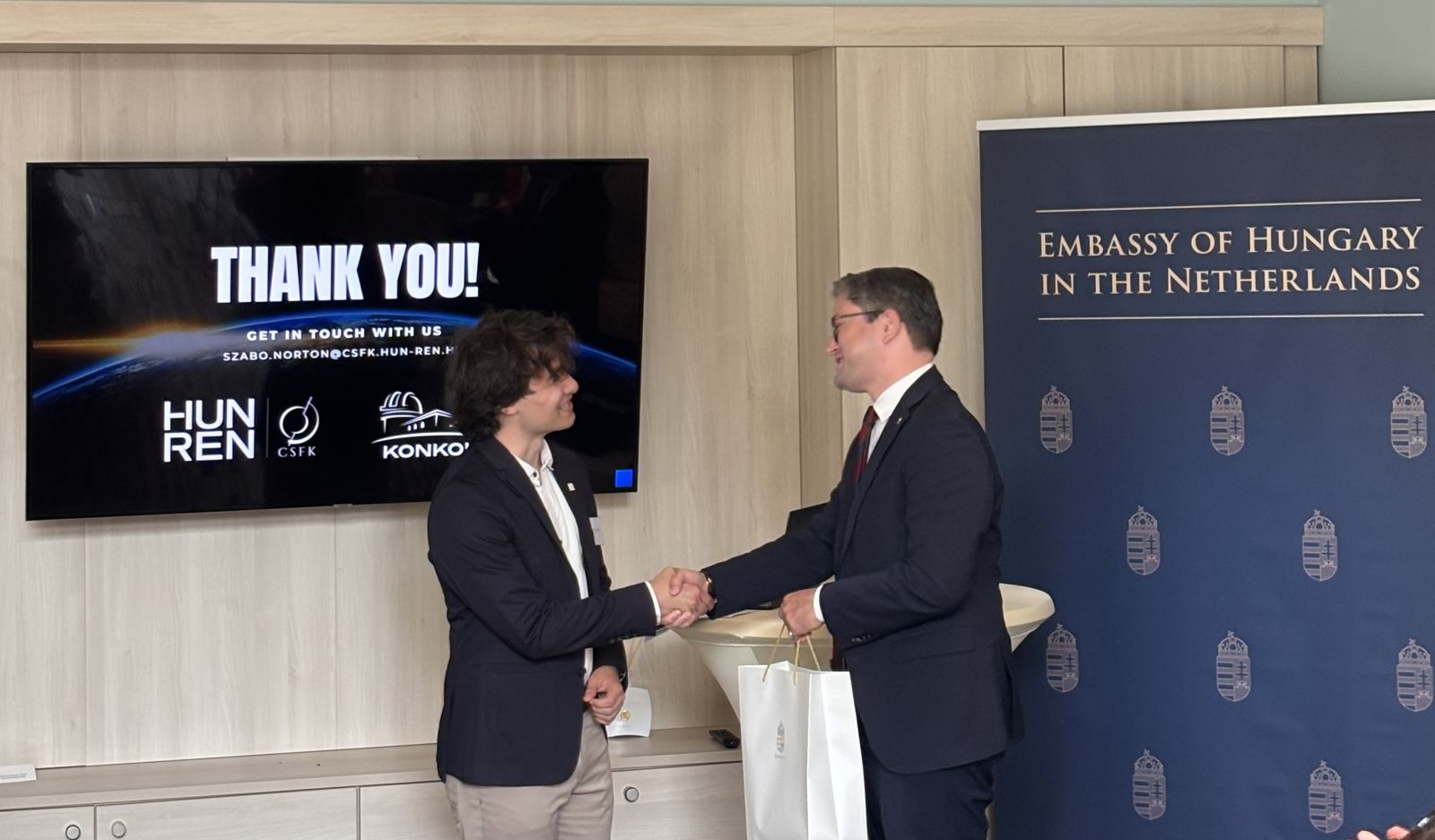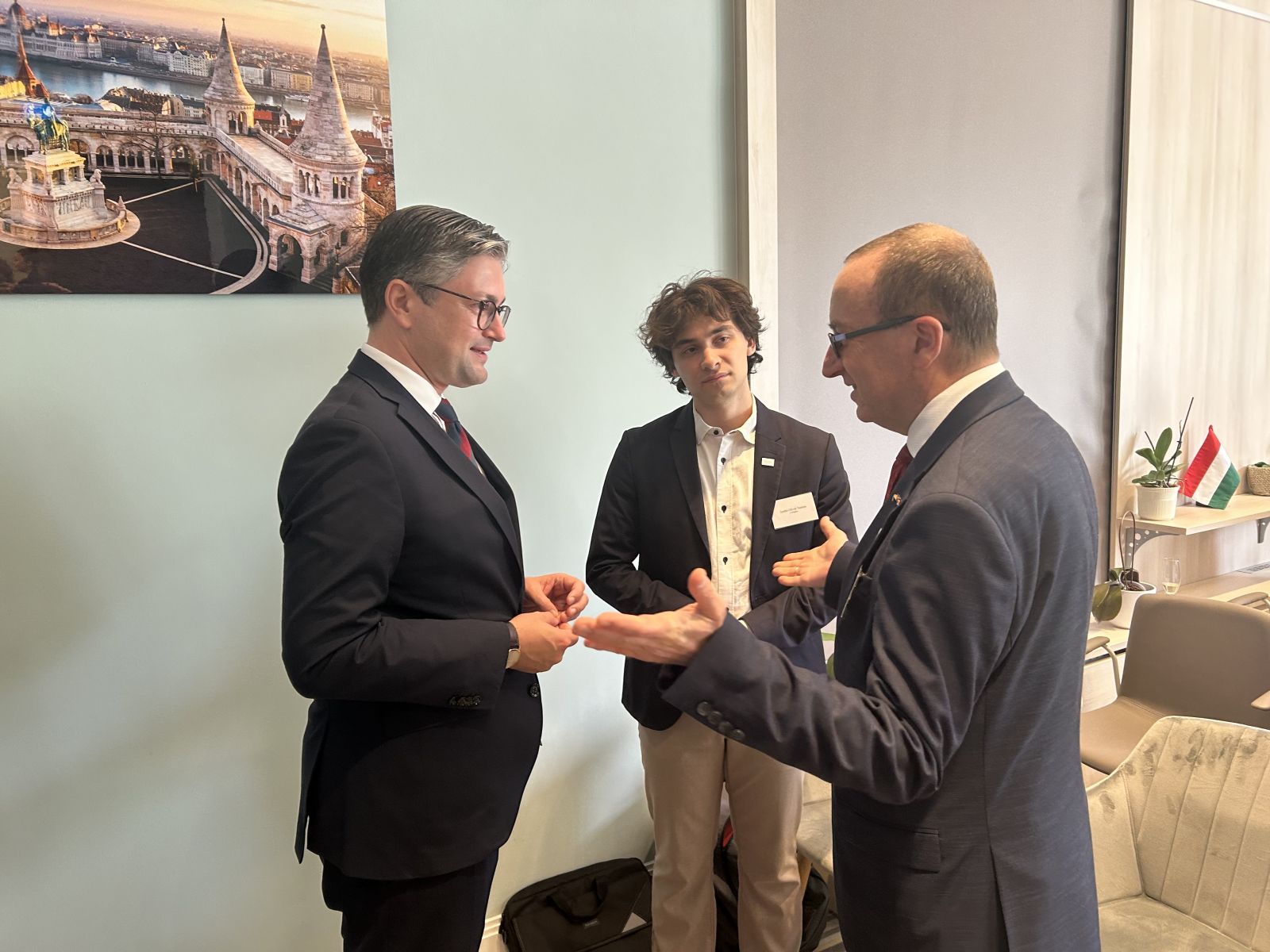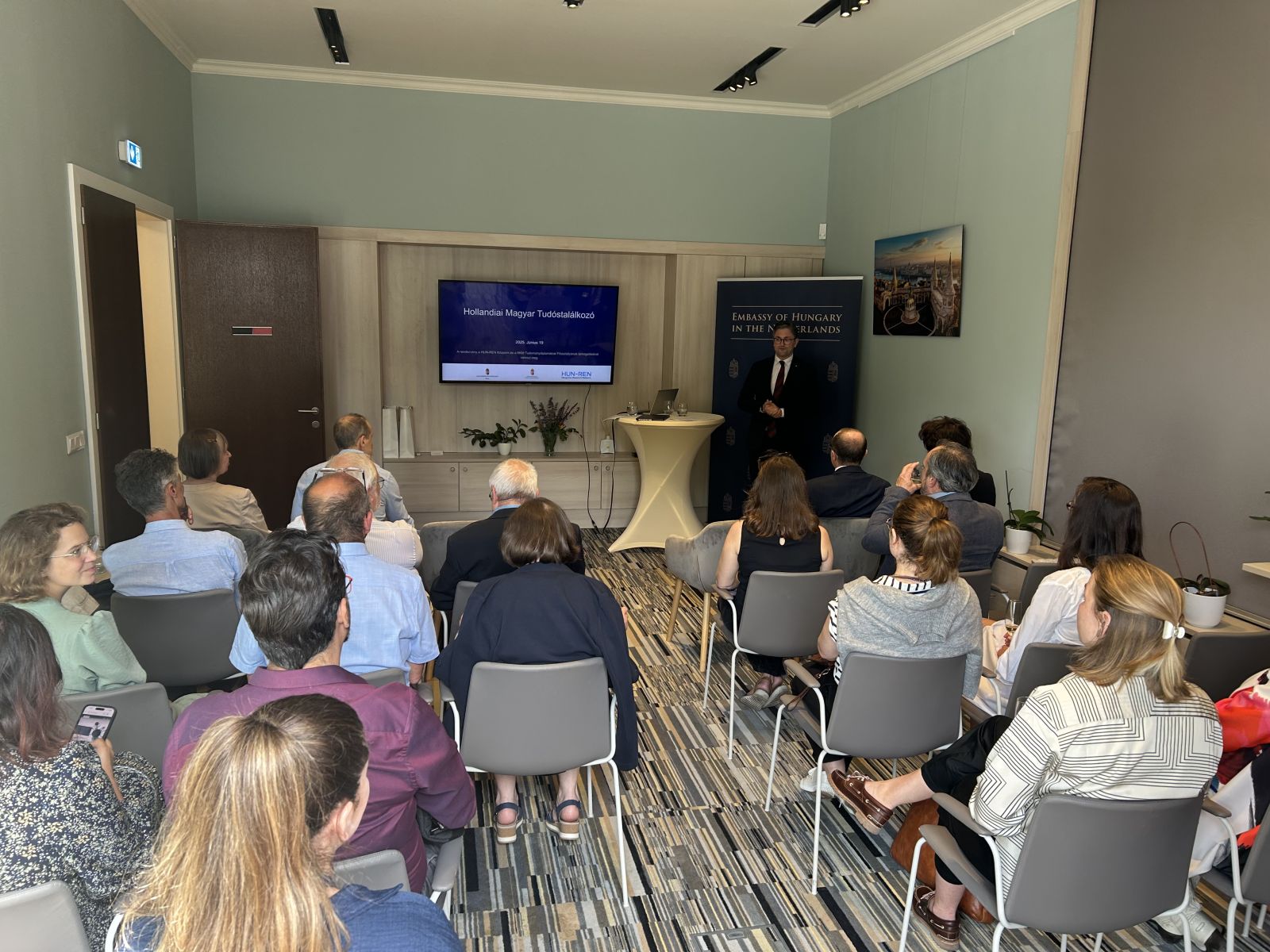Back in 2024 October Norton Szabó was invited to give a presentation to a delegation of science and technology diplomats from the EU Member States in Brussels at the HUN-REN Balaton Limnological Research Institute, at an event organised on the occasion of Hungary's presidency of the European Union. The aim of the more recent informal event in The Hague in June 2025 was to provide an opportunity for Hungarian academics in the Netherlands to meet and cooperate across disciplines and to learn more about the aims and workings of HUN-REN.
The meeting was opened in Hungarian by Ambassador Dániel Horogszegi Szilágyi-Landeck, followed by a brief presentation by Gyula Sümeghy, Head of the International Cabinet of the HUN-REN Hungarian Research Network. In his presentation, he described the organisational structure of the research network and gave a detailed account of the achievements and successes of the researchers. He also spoke about the objectives of the HUN-REN management and the symposia they are organising to stimulate cooperation abroad. In response to questions, possible collaborations with universities in Hungary and the Hungarian Academy of Sciences were of course also raised.

.jpeg)
Norton Szabó, a research assistant from our institute giving a presentation on the activities of the HUN-REN CSFK at the Hungarian Embassy in The Hague, with special emphasis on our planetary defense programme.
Norton Szabó then gave a scientific lecture on the dangers of Near-Earth Asteroids, with a special emphasis on the discoveries of the Piszkéstető Observatory. Following the development of the Schmidt telescope built in the 1960s, the number of minor planets discovered in Hungary has increased dramatically under the leadership of Krisztián Sárneczky. The nearly 300 near-earth asteroids discovered since then have made Piszkéstető the fourth most successful discovery programme in the world, after the US Catalina Sky Survey, PanSTARRS, and ATLAS programmes. Of the 11 impacting planets discovered by humankind so far, three were discovered by Krisztián Sárneczky using this telescope. Several of the meteorites found after these events are on display at our exhibition in honour of the 126th anniversary of the founding of our the Konkoly Observatroy.
The lecture included a presentation on the potential lunar impact of the 2024 YR4 minor planet, the story of which has been featured in the media. Discovered in December 2024, the approximately 60-metre-long asteroid was reported to the UN in January by the International Alien Planetary Warning Network (IAWN), of which the Konkoly Observatory (aka HUNREN CSFK Astronomical Institute) is a member, because calculations showed a more than 1% chance of a possible impact on 22 December 2032. Observations and more accurate orbit calculations since then have now completely ruled out this possibility. However, based on observations from the James Webb Space Telescope published in June, experts now estimate a 4.3% chance of a lunar impact. If it were to occur, the event, which is visible to the naked eye, would leave a 1 km crater on the Moon's surface and the debris that would be thrown up would cause increased meteor activity on Earth. The planet, which has an orbital period of 3,991 years, is now so far away from Earth that it is no longer visible to our instruments, so further clarification of its orbit is expected on its next return in late 2028.


Left: Dániel Horogszegi Szilágyi-Landeck, Ambassador of Hungary to the Netherlands (l), Norton O. Szabó (c), Gyula Sümeghy, Head of the HUN-REN International Cabinet (r). Right: the audience
The questions were related to the possible reason for the world-class performance of the Piszkéstető Observatory, the precise methodology of the discoveries, and the relevance of using of artificial intelligence-based algorithms.
The event ended with an informal barbecue where researchers were free to chat. Given the success of the event, the Embassy is expected to organise more similar events in the future.